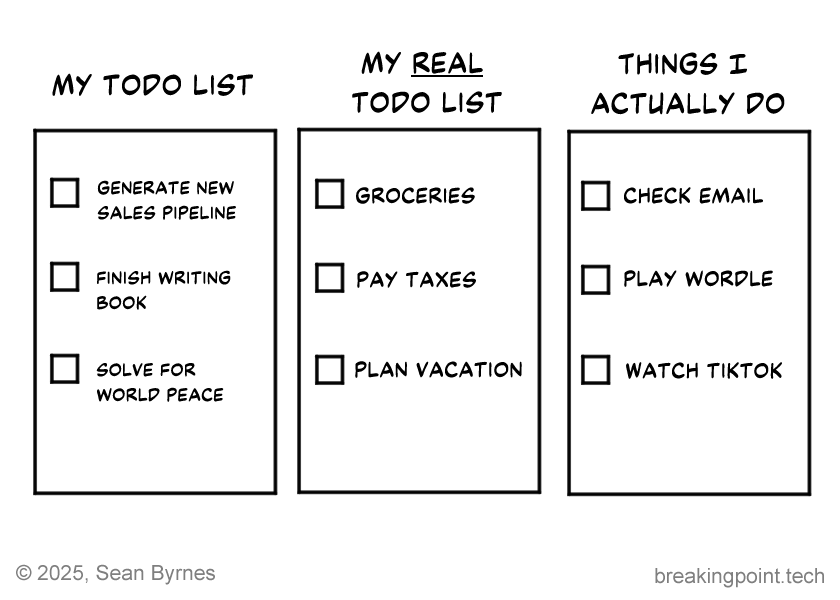Making Use of In-Between Time
Don’t waste time just because it’s short.
If you liked reading this, please click the ❤️ button on this post so more people can discover it on Substack. Thanks!
We are all busy, rushing between meetings and projects, responding to emails and messages. Often, it feels like we work for our calendars! You can work hard all day and still feel like you’ve accomplished very little.
One of the challenges of modern work is how easily it is to carve up your time. Back before the internet, meetings were all in person and it took coordination to find times that worked for everyone. As a result, calendars were deliberate and considered since meetings took effort. Now you can jump on a video call and then immediately jump onto another, again and again.
As a result, your day might look like a lot of large blocks of meetings and work time, with some oddly shaped times in between. Fifteen minutes, thirty minutes, these slices aren’t big enough to fit another meeting or real work in so often we waste them checking email, surfing the web or doing something else to burn the time.
Don’t waste those minutes!
The key to high productivity is making the most of your time, and you can’t do that if you’re wasting it. We need to turn those small, oddly shaped slices into free productivity time.
When you find yourself in one of these blocks, your first thought is likely “What should I do now?” You have a todo list that has a wealth of tasks, but it seems hard to pick one and get started with so little time. It seems overwhelming to figure out what to do, so we don’t.
There is an easy solution: You need 2 to-do lists.
Everyone has their main to-do list, which has all of your critical priorities. That list is essential, and you should keep it! We’ll call this your Main To-do List.
However, you need a second list of smaller tasks that only take a little time to complete. Things like responding to an important email, re-organizing your project folders or writing up a new idea. Those should go on a new list we’ll call the Little To-Do List.
The key to the Little To-Do list is not just that the tasks are small, but each item needs to include all of the context you need to remember to get it done. To complete a little task you don’t want to have to sit and remember everything - that takes time! The task needs to include everything you need to pick it up and get it done fast.
For example, let’s say you need to respond to an important email here’s how to add the task:
Bad: “Respond to Jim”
Good: “Respond to Jim from Acme Newsletters, Inc. about the invoice from January where the balance was off by $2,500”
In the Bad example I need to remember who “Jim” is, why I need to respond and what I need to respond about. In the Good example, I know exactly what needs to be done without going and finding more information! You can now complete the task in just a few minutes.
The advantage of having your Little To-Do list structured this way is that whenever you have an in-between time you can open it up, select a task and get it done! They easily fit into a few minutes and you don’t have to think too hard about it, just pick it up and get it done.
If you do this for a while, you’ll find it builds a valuable habit. Instead of automatically opening your email or messages when you have spare time, you will open this Little To-Do list and get something done! That will make you feel a lot more productive.
Productivity is not a mystical art, it simply means making the most of the time you work. Creating a Little To-Do list and using it to fill those oddly shaped in-between times will do exactly that.
For more on Productivity, see:



[x] "Remember to thank Sean in his substack comments for sharing a useful specific tip"
[ ] "Set a reminder to re-read some previous Breaking Point essays"